
The Utahraptor Project
Donation protected
Hello! I am Scott Madsen, and I manage this page, and I am shutting it down shortly. If you still want to donate to this project, please visit the Utah Geological Survey webpage at https://geology.utah.gov/popular/general-geology/dinosaurs-fossils/megablock/
I want to say thank you to some of the people who have helped me manage this page for the past six years, the so-called unsung heroes who deserve naming.
A brief mention first, we did surpass our original fundraising goal of $200,000, accrued over 2 GoFundMe campaigns over 6 years and with considerable help from outside donations that we counted along with our GoFundMe totals to remain transparent. The GoFundMe totals came to $83,797!
I want to say a special thanks to a few folks like Daniel and others who kept coming back to this page to help us out over and over again. We noticed and we really do appreciate the special things that people did and said to us over the years. By your financial support alone you are helping a scientific endeavor move forward, but we value the enthusiasm and personal exchange as well. Thank you.
Thank you-
BJ Nicholls, for being there from the start. For all your tech help, editing, photography, drone work, thoughtful advice, friendship, Lori, BJ, you have been invaluable.
Mike Eklund
Phil Policelli
Anneli Mari Segura
Margaret Madsen
Riley Black
Don DeBlieux
Jim Kirkland
Wayne and Karen Lattuca
Annette Woolsey
Everyone else!!!
I am Scott Madsen and I manage The Utahraptor Project. I am what’s known in the paleontology profession as a fossil “preparator”; preparators are the people who remove the rock from the bone and stabilize the fossil for study and storage. I worked for the Utah Geological Survey (UGS) in Salt Lake City, Utah, until I was laid off in 2015 just after the megablock was finally out of the ground and ready to be prepared. After years anticipating what treasures lay inside the block, I couldn’t let it go and decided to launch this fundraising campaign to pay for the preparation of the fossils.
Sincerely,
Scott K. Madsen
Salt Lake City, Utah
December 2021.
Trapped in an 18,000-pound block of quicksand now turned to stone is a hidden treasure of well-preserved Utahraptor fossils. Utahraptor ostrommaysorum is a large (about 18 feet long), feathered, predatory theropod dinosaur from Utah’s early Cretaceous (~124 million years ago). Utahraptors sported huge sickle claws on their second toes, with the largest specimen measuring at 8.7 inches long. Utahraptor is a dromaeosaurid dinosaur — popularly called “raptors” based on the Jurassic Park movie franchise shorthand for its sickle-clawed stars.
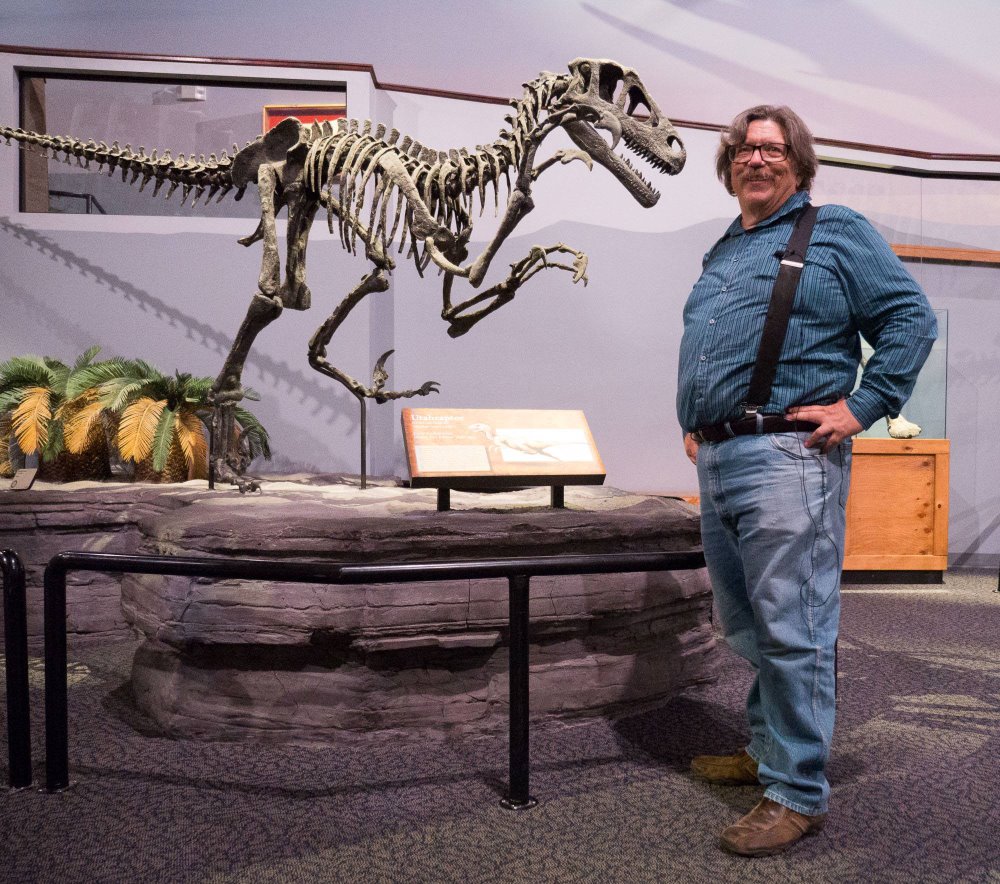
Dr. Jim Kirkland, who named Utahraptor.
Discovery and Road to the Museum-
Around 2001 a geologist named Matt Stikes discovered the Utahraptor quarry. Paleontologists from the Utah Geological Survey (UGS) then spent parts of 12 field seasons excavating at the Stikes Quarry, watching in joy and horror as "the block" grew to nine tons! But with the generous help of the UGS, Thanksgiving Point, donors and volunteers, we dragged the huge block out of the ground and into a lab at Thanksgiving Point in 2015. In February 2020, the block was moved to its new home at the Utah Geological Survey in Salt Lake City.
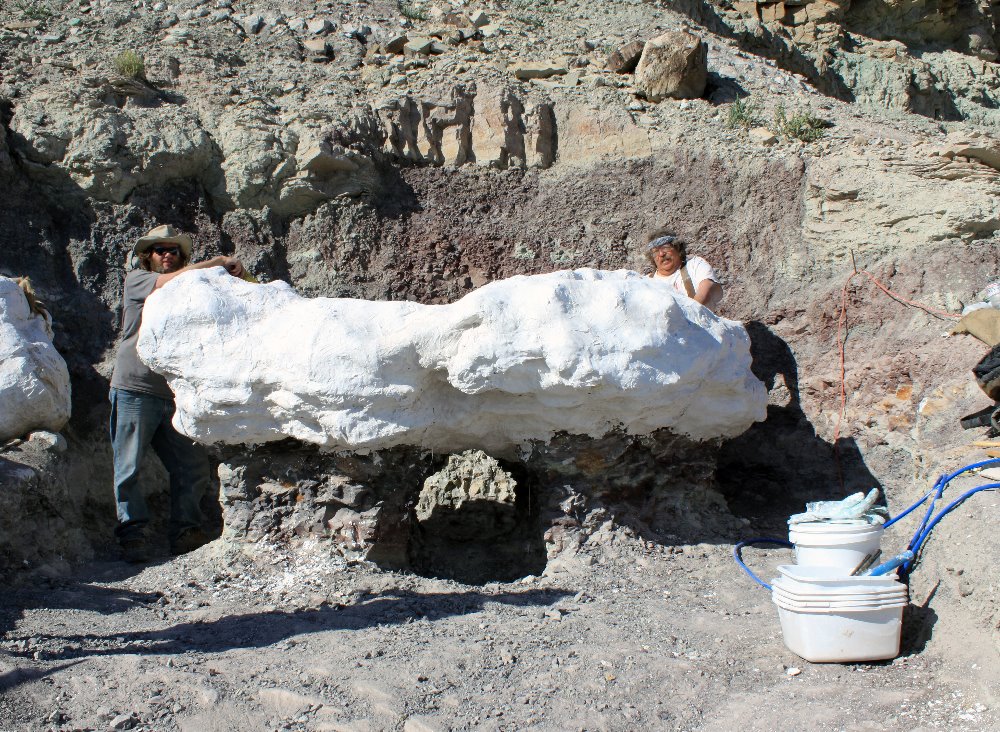
Nicknamed "MOAB", the 9 ton "mother of all blocks" in its plaster jacket in 2014.
The illustration below, courtesy of Julius T. Csotonyi, shows the suspected setting for the origin of this amazing fossil block. Bones of an iguanodontid dinosaur found at the site suggest it got mired in quicksand. So far, we’ve found bones from at least six individual Utahraptors ranging in size from adults to babies. We think they were attracted to the quicksand by the easy prey, but soon found themselves mired as well. The Utahraptors in this block could provide evidence for pack hunting behavior, or even represent a family. We don't know how many individual dinosaurs might be awaiting discovery in this block, or what other animals may have been trapped with them. To find out
we need your support!
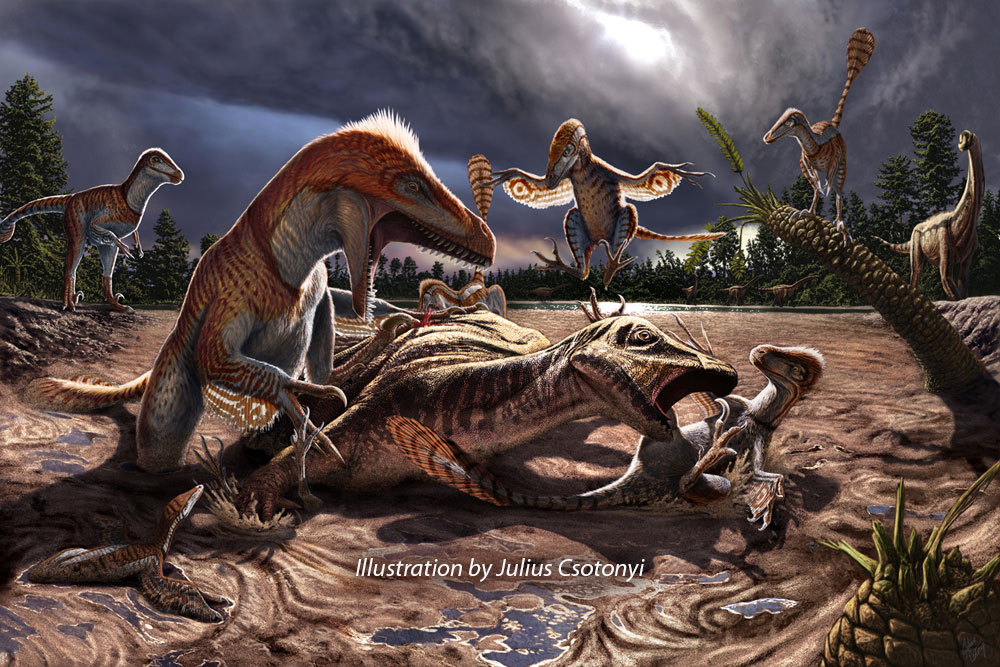
WHAT WE WILL DO
We have a nine-ton rock and it’s time to find out what’s inside! The only way is to carefully reveal the bones, stabilize them with chemical solutions, and remove them from the rock using specialized tools – a subdiscipline of paleontology known as preparation. The amazing bones that have already been prepared indicate this is going to be a really exciting project with frequent new discoveries along the way! Help us to make this project happen so that we can show the bones prepared live in a popular museum setting, and join us as the scientific process unfolds online where we'll share both discoveries and scientific insight. We’re asking for your support so that we can gain the maximum amount of scientific data during preparation, and provide an exciting educational window into this important paleontological project. With your donations, we plan to provide you with a compelling story in pictures and in words as we dissect an interesting scientific puzzle in front of your eyes.
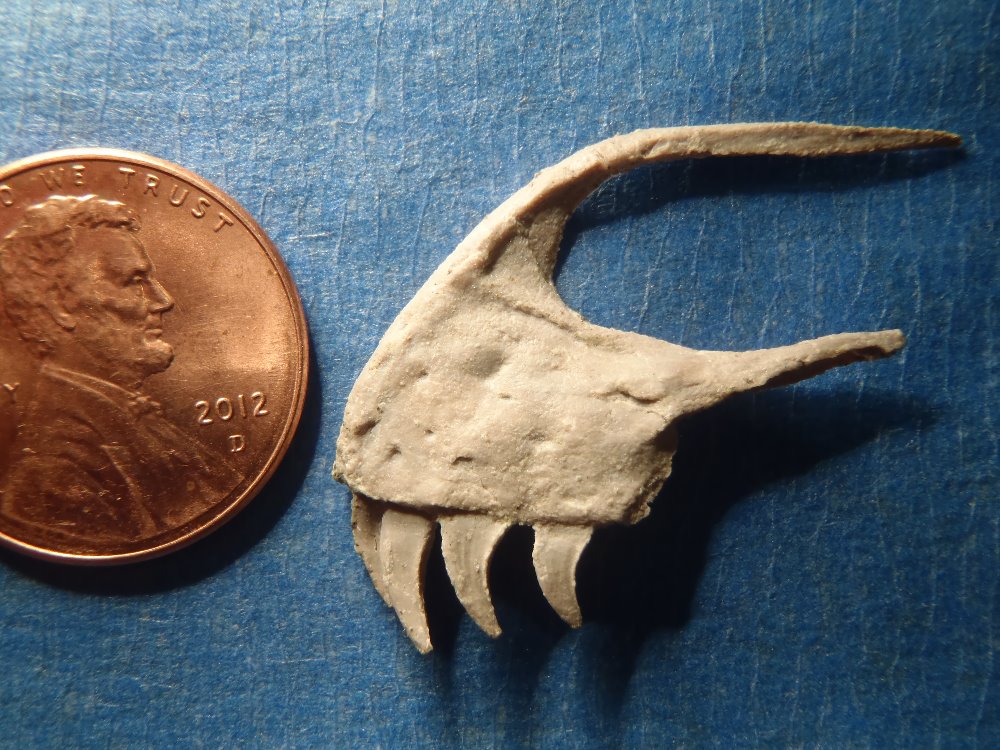
A baby Utahraptor bone (premaxilla with teeth) from the block. This single bone represents a few days of careful work under a microscope. We now have 4 of these bones representing 4 individual babies.
WHO WE ARE
We are employees and former employees of the Utah Geological Survey in Salt Lake City. The project lead scientist is the Utah State Paleontologist, Dr. Jim Kirkland. Assistant State Paleontologist and fossil preparator Don DeBlieux will be doing some of the preparation, as well as the photogrammetry and curatorial work. Scott Madsen, formerly of the UGS, will be the lead preparator on the project. Madsen's expertise is in preparing very tiny, fragile and complex bones and teeth (like the one above), but he has worked with dinosaurs of all sizes for 40 years. Scott is committed to working for at least another year on this project (hopefully longer), and your donations will secure his services at a fair rate.
WHY WE ARE DOING THIS
First and foremost, we are doing this for science — to learn as much as we can from this unique fossil. We take our responsibility to do a good job very seriously, and will dedicate our time and talents to insure this block is prepared to the highest standards and the results shared in scientific journals and popular media. We hope this campaign is successful enough to continue for several more years since it's going to take at least that long to prepare the block. It takes a lot of work, but so far this block has not disappointed us. When we see the sharp, steak-knife serrations of a tooth appearing under the microscope it is a true ah-hah! moment. You can be a part of that experience.
HOW WE WILL USE YOUR DONATION
The donations raised will go towards funding the essential equipment, and to funding the services of professional preparator, Scott Madsen. We have met our funding goal for acquiring much of the equipment and Madsen is well into the work. Madsen will be dedicated to performing most of the difficult and time-consuming work of removing rock from bone and revealing the secrets of the block. Madsen will also train volunteers and coordinate with research scientists. Another major task will be keeping the cameras rolling for documentation, 3D modeling, and public viewing of the work. Madsen will post discoveries on the project's blog at Facebook as new fossils come to light. All proceeds from this Go FundMe campaign go directly to Scott Madsen's business, Precision Fossilworks, to be used specifically for the Utahraptor Project as described here.
If you wish to make a tax-deductible (501c3)contribution to the project, please contact us directly.
Specialized Equipment:
A project as big as the Utahraptor block requires some specialized equipment. All of the equipment we are asking for is essential for doing the highest quality work, and we've found good sources at reasonable prices.
• microscope upgrades
• air scribes
• preparation supplies
Microscopes (similar the one below) are the single most important piece of equipment needed for this work. We will need two of them so that we can work on different sides of the block without getting in each other’s way. Microscopes will be mounted to mobile floor stands with long boom arms and fiber optic lighting so we can work far out into the middle of the block. With small video cameras we can show you exactly what we are doing, even live stream for special interactive events for project supporters! We now have a good quality camera to capture still images for photogrammetry – the raw material that will allow us to create 3D models of the block and fossils. The cameras will also be used for producing educational and training materials for teaching people how to do fossil preparation.
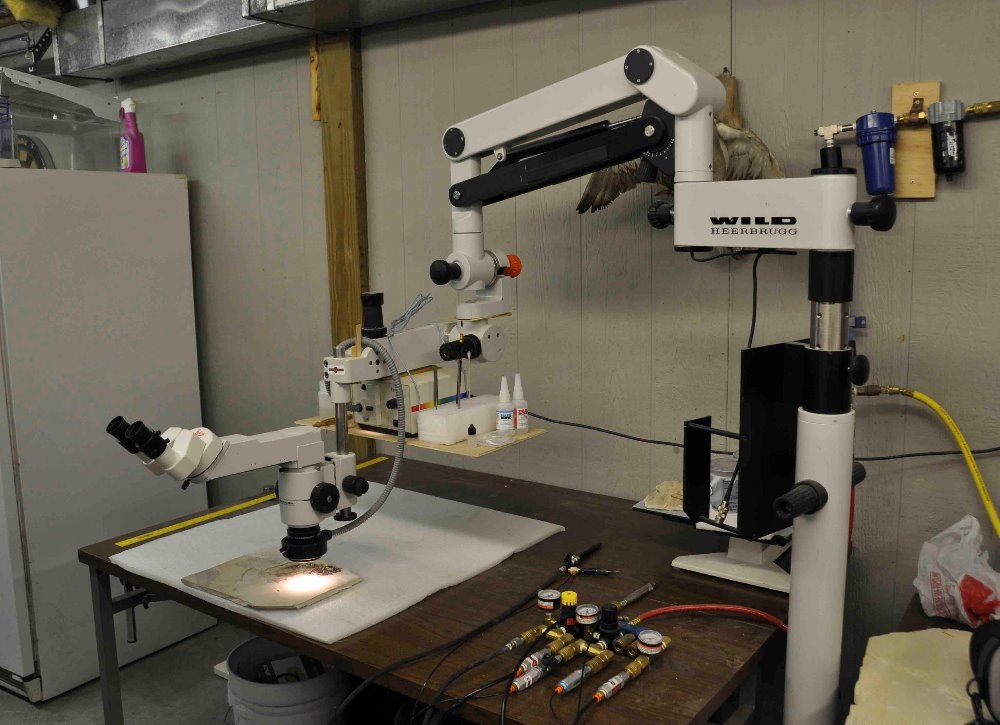
Pneumatic preparation tools, a.k.a. airscribes, are critical for this work and we need a range of airscribe sizes; big ones capable of moving a lot of rock as well small, precise ones for prepping out the tiniest of Utahraptor baby teeth.
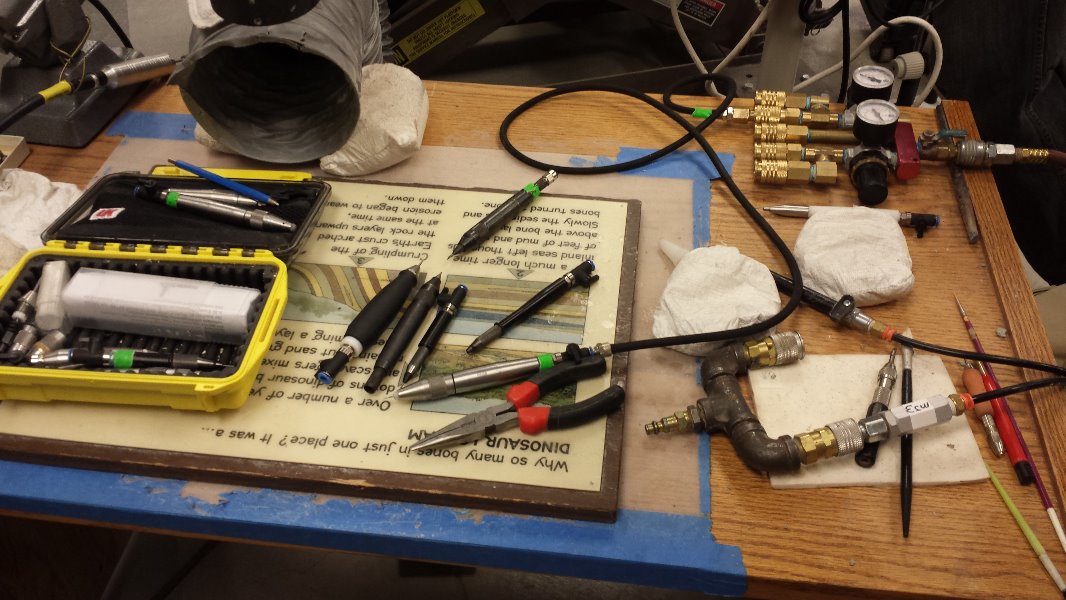
We will need an assortment of special glues and solvents to repair and stabilize the dinosaur bones, as well as miscellaneous brushes, syringes, carbide needles, grinders, dust collectors, and other tools standard in paleontology labs. Video and webcasting hardware will be necessary so you can see us using this equipment.
Photogrammetry — About 124 million years ago, this plug of sandstone was actually a gooey mess that likely trapped, killed and preserved a bunch of dinosaurs. What did that look like? Why are these bones here? There is a story to be told. The technique of photogrammetry allows us to map all of the bones in the block in 3 dimensions and see how they relate to each other. It will be a powerful tool for helping the scientists (Jim Kirkland and others) to figure out exactly what happened here. If our hunch is right, we think it's also going to be a cool visual display of an extinct animal trap. Photogrammetry requires a good digital camera, a computer, and software. 3D models should be an exciting way for you to experience this project.
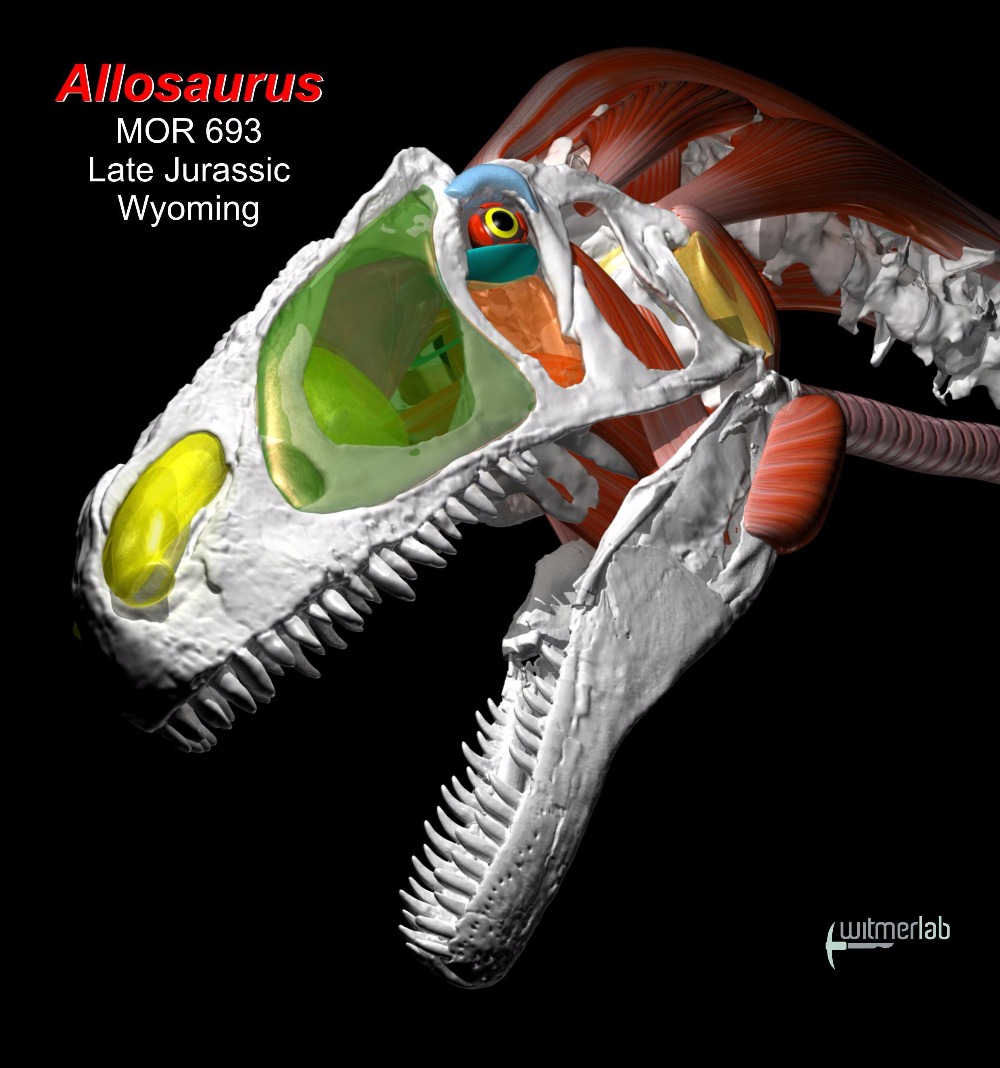
3D reconstruction by WitmerLab, Ohio University
A final component of the work will be preparing the bones for curation and storage at their eventual home at the Natural History Museum of Utah (NHMU) in Salt Lake City. Though it might seem mundane, it is important for the long-term safety and preservation of the fossils that they are stored in proper boxes with padding and are all numbered and accounted for.
Please support and share the Utahraptor Project! Thank you for your generosity — it is making scientific discovery possible!
Organizer
Scott Madsen
Organizer
Salt Lake City, UT